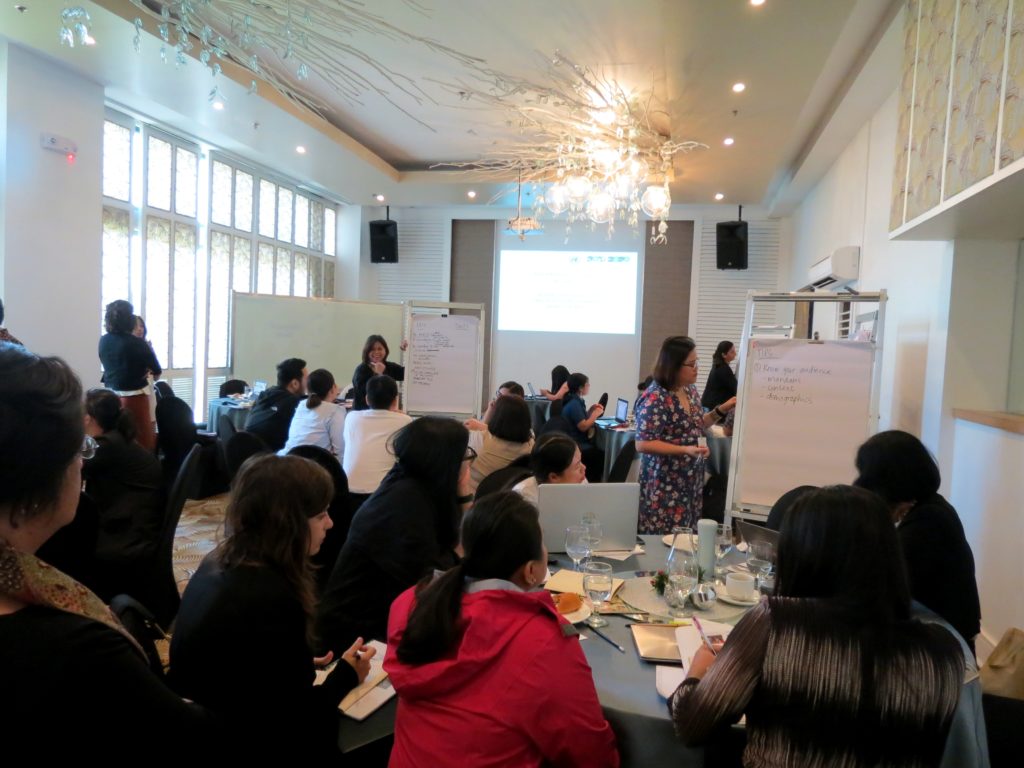ASEAN sharpens focus on gender in biodiversity conservation

MANILA, PHILIPPINES—Factoring in gender roles and relations in policymaking is crucial in the success of biodiversity conservation efforts, experts in a regional training workshop conducted here said.
Among the common insights that emerged from the workshop is the role of the special knowledge, skills, and experience of women in effective conservation programmes. In fishing communities, for example, women, who fish and gather shells in mangrove areas, would have different inputs from men, who usually fish at far-off coral reefs.
The five-day regional workshop from 9-13 December 2019 was organised by the Secretariat of the Convention on Biological Diversity (CBD) and the ASEAN Centre for Biodiversity (ACB) as part of their efforts to build a network of gender practitioners in biodiversity.
With representatives from ASEAN Member States and government and non-government organisations as participants, the workshop sought to deepen understanding and build capacity among policymakers and stakeholders in addressing gender and biodiversity issues in the ASEAN region.
Led by Tanya McGregor of the Secretariat of the CBD and CBD Gender Consultant Soma Chakrabarti Fezzardi, the first two days of the workshop were devoted on training trainers in gender mainstreaming, followed by a roll-out exercise where the new trainers facilitated a learning session attended by staff members of the ACB and its country partners.
The workshop also sought to gather inputs to ensure the gender responsiveness of the post-2020 global biodiversity framework, which charts the long-term direction of biodiversity conservation and takes the vision of the CBD on “Living in Harmony with Nature” by 2050.
In her remarks, ACB Executive Director Theresa Mundita Lim said women are important partners in halting biodiversity loss.
“The CBD also recognises the vital role that women play in the conservation and sustainable use of biodiversity, and affirms the need for the full participation of women at all levels of policy-making and implementation for biodiversity conservation,” Lim said, citing from the CBD’s preamble.
The CBD is a global agreement signed by 196 parties, including all ASEAN Member States, with main goals including biodiversity conservation, the sustainable use of its components, and the fair and equitable sharing of benefits arising from genetic resources.
Lim said the gender gaps in the region must be considered, citing the ASEAN Economic Community report that notes that women’s share of employment in agriculture vary from 28 per cent to a high 78 per cent among the ASEAN Member States, but their work is usually unpaid and unaccounted for in the value chain, especially in agriculture.
“The gaps are still overwhelmingly for women. Women are usually the one left behind,” Fezzardi, who facilitated the training of trainers, noted. She added this is why it is important to include a gender lens in looking at biodiversity issues, and ensuring women’s voices are included in decisionmaking.
Fezzardi cited situations in the field where stakeholders are consulted. “We simply sit with the men, women, and children, and got each of their visions. In the end, mobilising a man’s potential, a woman’s potential, and a child’s potential, is good for the entire family and the community,” she said.
“Ideally, there is empowering participation where women and men have voice and influence,” Fezzardi said.
Lim particularly noted improvements in women’s participation in the ASEAN region.
She said in Indonesia, some women have organised themselves in informal groups to improve their credit access for their farming. In Myanmar, informal linkages among women farmers likewise exist.
“In some ASEAN Member States like Thailand, many women farmers have the sole or shared decision-making power with their husbands,” she said.
A pilot exercise in the region, the training workshop tackled topics such as gender and biodiversity concepts, gender analysis and gender mainstreaming, relevant international policy commitments, and programming practicalities, including gender-responsive planning.
“As we look carefully at biodiversity plans, policies, and programmes in our organisations with a gender lens, and as we practice and enhance our capacities in gender analysis, we can have more gender-responsive, and in turn, more powerful and effective biodiversity conservation initiatives,” Lim said.
#

